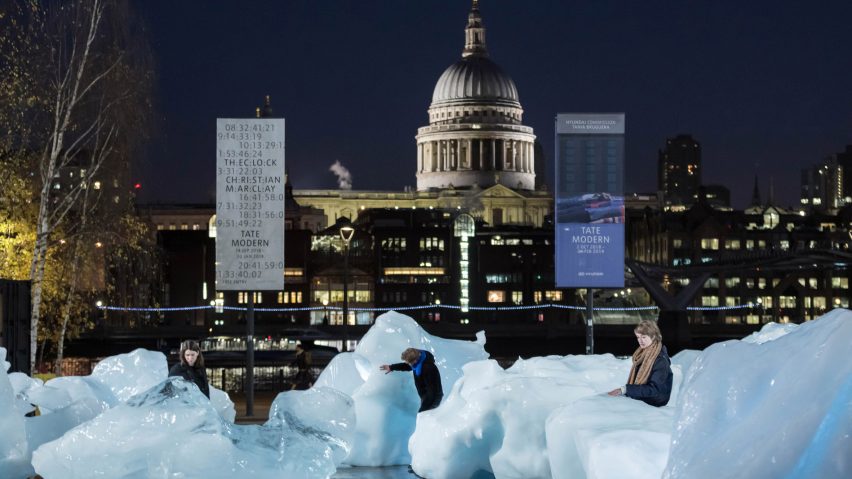
Olafur Eliasson installs giant blocks of glacial ice across London
Danish-Icelandic artist Olafur Eliasson has extracted 30 blocks of glacial ice from the waters surrounding Greenland and placed them in public spaces across London, where they will be left to melt.
Called Ice Watch, the temporary installation is meant to serve as a visual reminder of the impact of climate change on the environment.
The hunks of ice are scattered across two locations. There are 24 in a circular grove outside Tate Modern and six additional blocks outside the Bloomberg headquarters in the City of London.
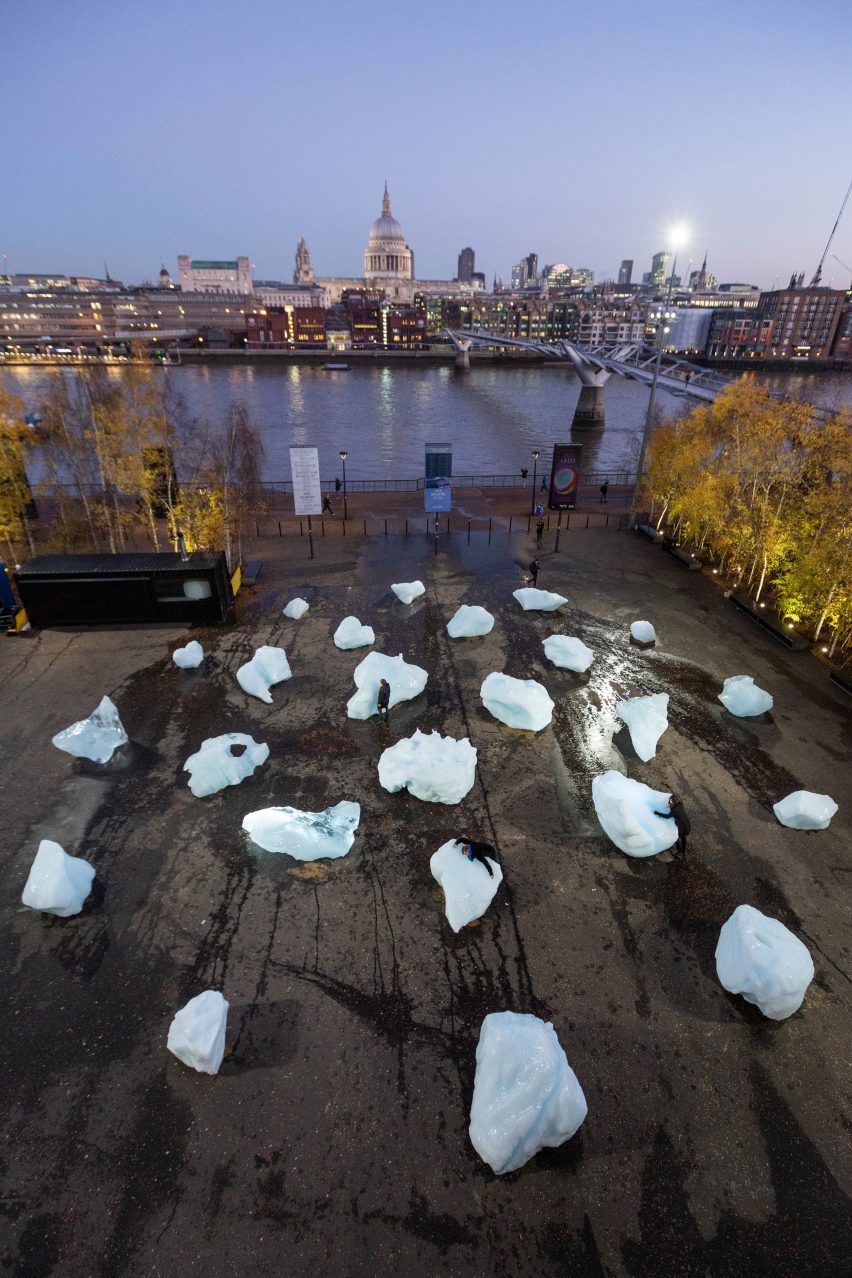
Eliasson hopes that the project will "give feelings to things that are otherwise unemotional" and encourage the "big players, the state, but also the private sector and large companies" to act.
"It is so abstract, it's so far away Greenland, it's literally out of our body and it's in our brain and I wanted simply to change that narrative of the climate from our brain and emotionalise it into our bodies," the artist told Dezeen.
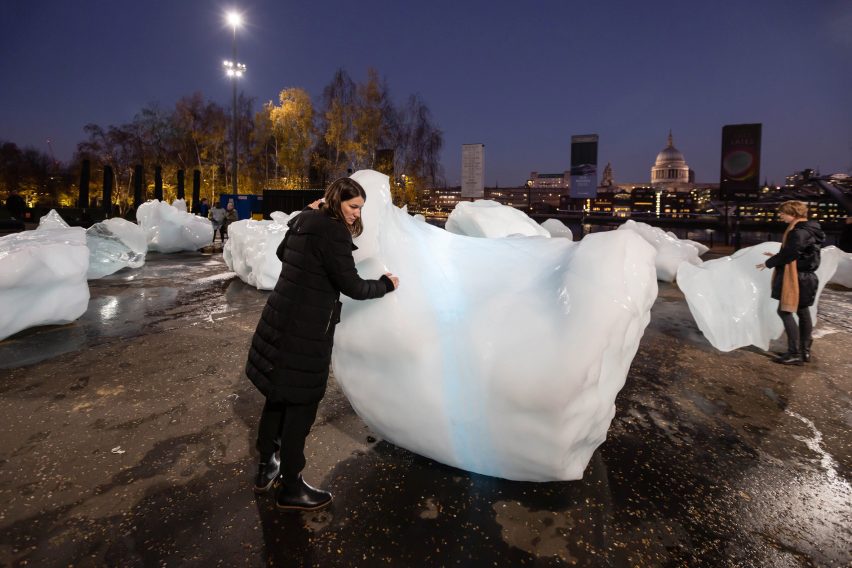
Eliasson worked with geologist Minik Rosing to transport over 100 tonnes of free-floating, glacial ice from the waters of the Nuup Kangerlua fjord in Greenland. The ice had separated from its sheets and was discovered melting into the ocean.
The installation will be on show from 11 December until the ice melts, which will depend on weather conditions. Members of the public can interact with the blocks and watch as the ice thaws in front of them.
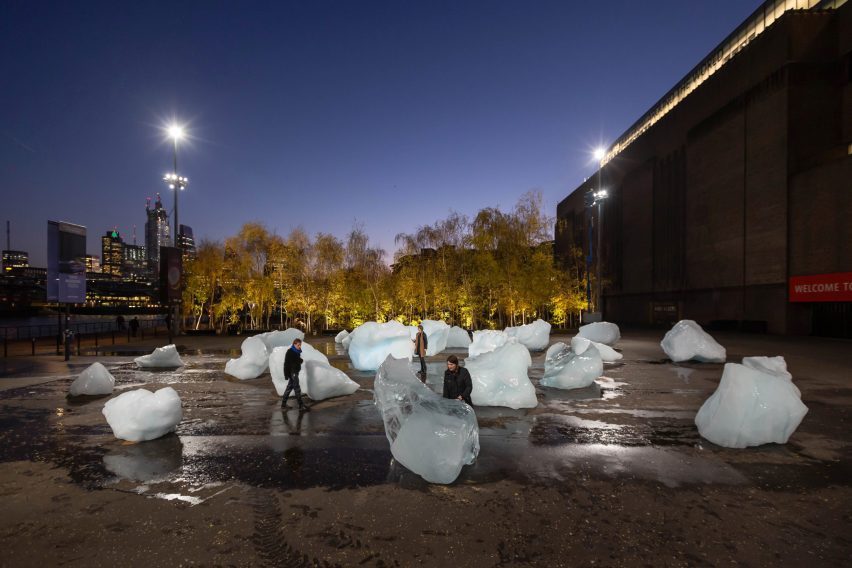
"The ice is amazingly beautiful – you can smell it, you can kiss it, and essentially put your hands on it and touch Greenland," said Eliasson.
"It is a lot more physical; it suddenly gives a stronger sense of what it is they're talking about when they say the Greenland ice caps are melting," he explained.
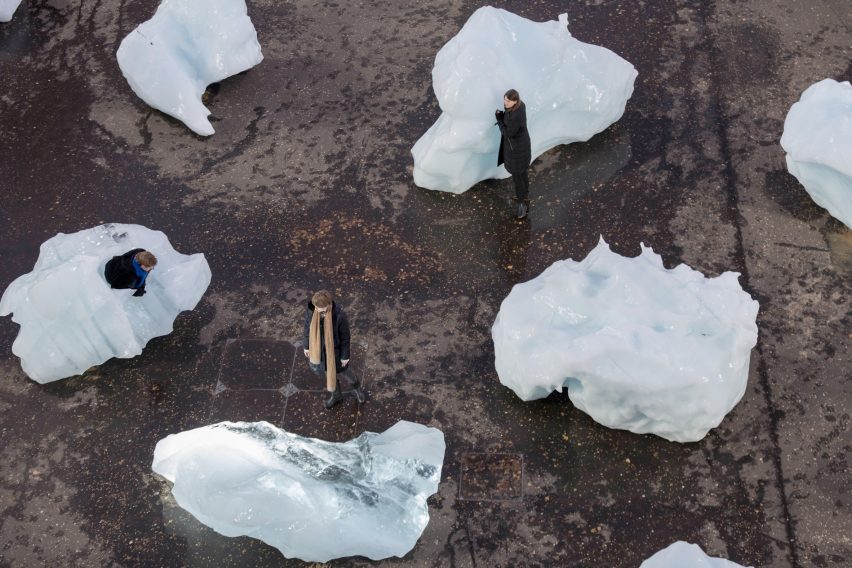
The exhibit coincides with the meeting of world leaders at the COP24 climate change conference in Katowice, Poland. It aims to inspire "really urgent" public action against climate change.
"The cultural sector has a very strong relationship with the general civic society and I think the cultural sector has the mandate to express itself and to voice its concern when the so called public sector, the politicians fail to do so," explained Eliasson.
"We must recognise that together we have the power to take individual actions and to push for systematic change. Let's transform climate knowledge into climate action," he continued.
The project follows a report published by the Intergovernmental Panel on Climate Change on 8 October, which stated that we have only 12 years to limit the most drastic effects of climate change.
"Since 2015, the melting of ice in Greenland has raised global sea level by 2.5 millimetres. Since the discovery of the greenhouse effect in 1896, global temperatures have increased more than one degree celsius. Earth is changing at an ever-increasing speed," said Rosing.
"Science and technology have made it possible for us to destabilise Earth's climate, but now that we understand the mechanisms behind these changes, we have the power to prevent them from growing," he explained.
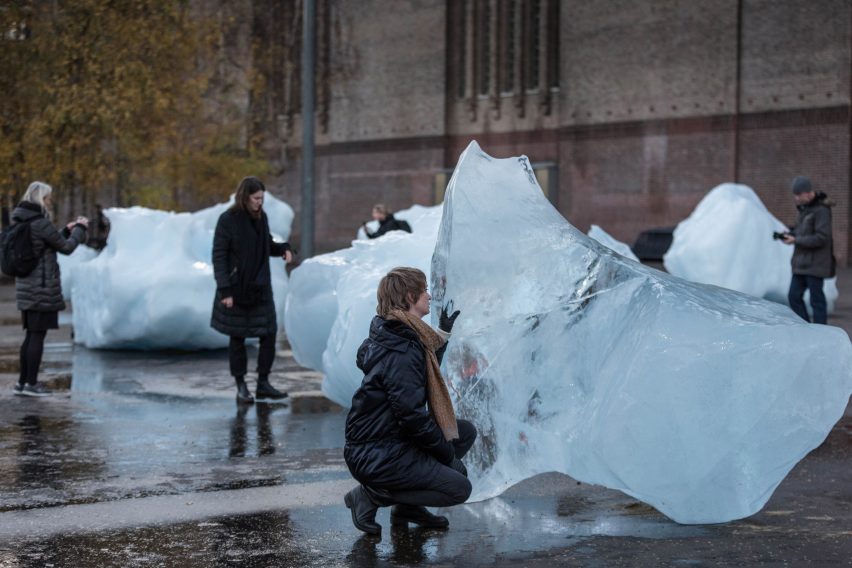
Ice Watch comes 15 years after Eliasson's previous Tate installation, The Weather Project, which created a glowing sun in the Tate Modern's Turbine Hall. The project remains one of the museum's most popular installations of all time.
Eliasson hopes this latest project – which follows a similar installation by the Place de Panthéon in Paris in 2015 – can have a similar impact.
"I'm not naive, I understand that this one project probably will not suddenly tilt something major around, but I do honestly believe that I am part of a movement," he said.
"I think it matters for people to actually put their ear to the ice and suddenly realise that is has a very subtle cracking, hopping, crisp noise because the melting releases pressure bubbles that have been stuck in the ice for 10,000 years," he said.
"Ten thousand years ago there was 30 per cent less carbon dioxide in the atmosphere, so the smell of the ice blocks should be the smell of the air from 10,000 years ago."
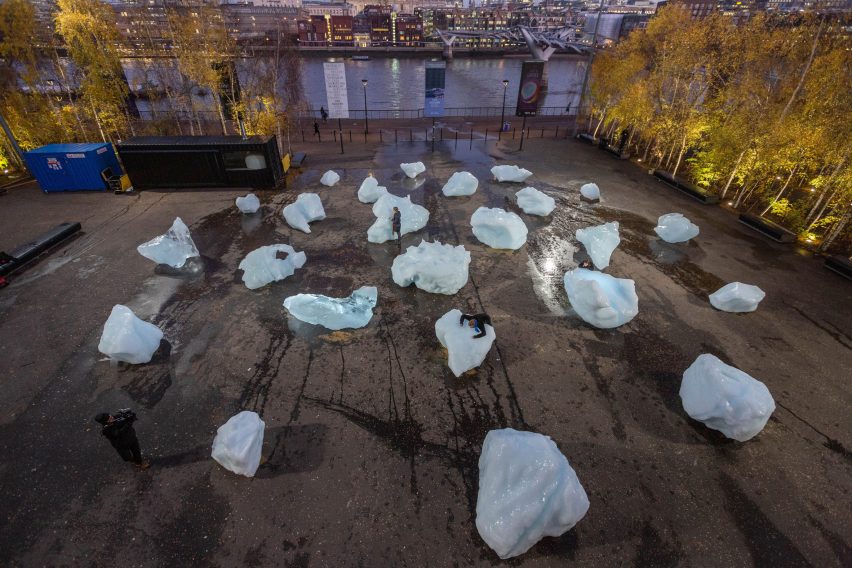
A major exhibition of Eliasson's artwork will follow at Tate Modern in July 2019.
His other recent projects include a fortress-like office in the Vejle Fjord in Denmark, a set of environmentally minded luggage stickers for suitcase brand Rimowa and a revamp of his popular solar-powered mini lamp, the Little Sun Diamond.